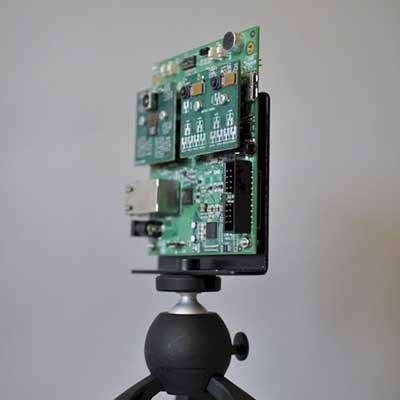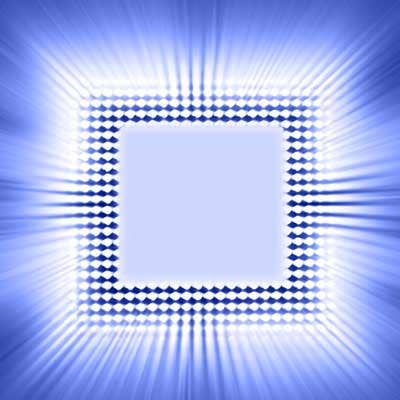Q&A: Intel Executive Talks Artificial Intelligence Strategy, Next-Generation Movidius Chips

Intel's Focus On AI
Intel has been sharpening its focus on artificial intelligence as the company looks to grow in new areas of technology beyond the PC market.
The Santa Clara, Calif.-based company Monday inveiled its next-generation "vision processing unit," embedded technology with processing capabilities for edge devices such as virtual reality headsets, smart cameras, wearables and robots. Intel's chip, which has a Neural Compute Engine for deep learning at the edge, comes almost a year after the company in September 2016 acquired Movidius, which is now a subsidiary of the company.
CRN talked to Gary Brown, vice president of marketing at Movidius, about Intel's overall artificial intelligence strategy.

What is Intel's overall strategy around artificial intelligence and how does this vision processing unit play into that strategy?
Intel believes AI is driving the next big wave of computing and revolutionizing the way businesses operate and how people engage in every aspect of life. As a data company, it is imperative that Intel deliver solutions that create, use and analyze the massive amounts of data that are generated each and every minute. There is an incredible opportunity to make AI accessible to every industry, and Intel is working to do that with focus and support from across the company. The new Myriad X VPU with its support for imaging, computer vision and machine learning is part of Intel’s broad portfolio of hardware solutions and software tools to meet end-to-end requirements across emerging AI workloads.

What is Intel's product lineup in the artificial intelligence space?
Only Intel has the full complement of technologies required to stitch together AI solutions, including memory, storage and communications. To simplify deployment everywhere, Intel also delivers a distributed portfolio of processors from edge to cloud, and our embedded technologies for the edge include Intel RealSense technology and Movidius vision processing units. Intel offers the most flexible and performance-optimized portfolio of products, from more general-purpose CPUs, including Intel Xeon processors and Intel Xeon Phi processors … to more workload-optimized accelerators, including FPGA and Nervana technology.

Where do Movidius VPUs fit into this lineup?
Movidius VPUs specifically address the market need for low-power computer vision and deep learning at the edge in such markets as drones, high-end virtual reality headsets, robotics, smart home devices, smart cameras and other types of surveillance solutions. With the Neural Compute Engine, Myriad X represents the second generation of Movidius VPUs with neural network inferences support, delivering 10 times the compute performance on deep neural networks compared to Myriad 2 VPU. The advanced capabilities enabled by Neural Compute Engine in Myriad X is another step on the path toward achieving human-level visual intelligence in devices.

Are there any opportunities for Intel’s channel partners in AI? If so, what are they?
In the area of our VPUs, we envision that channel partners would have opportunities to bring visual intelligence in certain markets where end product companies want to include AI in their products but just don’t have the expertise required to build the right modules. For example, the Movidius VPUs can bring intelligence to products like robotic vacuum cleaners -- when our VPUs are integrated in a module that can make a robotic vacuum clean smarter, it can be a win for both the channel partner with expertise in building such a module as well as the end device maker. As the Myriad X VPU moves towards production, we will explore the range of opportunities with our channel partners.

What kind of features have you added to the next-gen VPU that make it better than the previous Movidius VPUs?
The next-gen Myriad X VPU we’ve announced better addresses the requirement for more sophisticated AI workloads, including multiple neural networks running simultaneously -- similar to how the human eye can understand and draw multiple conclusions from its surroundings in the blink of an eye. The Myriad 2 VPU is our first-generation support for low-power deep neural networks, but Myriad X can achieve 10 times the compute performance on such deep learning applications. How we achieve this leap in performance is with a new key feature of Myriad X – the Neural Compute Engine, an entirely new deep neural network inferencing engine now included as part of the Myriad X architecture. With this dedicated on-chip accelerator for deep neural networks [DNNs], Myriad X delivers over 1 trillion operations per second of DNN inferencing performance.

What does the Movidius Neural Compute Engine capabilities mean for device makers?
With the Neural Compute Engine, Myriad X represents the second generation of Movidius VPUs with neural network inferences support, delivering 10 times the compute performance on DNNs compared to Myriad 2 VPU. We’ve done this within the same tiny physical footprint of the Myriad 2 chip and the ultra-low-power envelope Movidius is known for -- meaning device makers won’t need to make changes related to size, space or power usage in order to realize the benefits of the new chip.